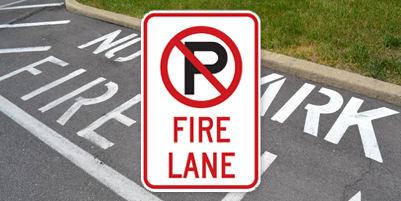Emergency Vehicle Parking Signs
- Best used to assign emergency parking spots and identify fire lanes
- Designate which areas of a parking lot are for emergency personnel only and which areas are tow-away zones
- Hospitals, medical offices and commercial businesses that need access for emergency personnel should use these signs
- Check local codes to ensure you choose signs that comply with regulations in your area
- All our reflective signs are made in the USA

Fire Lane and Emergency Parking Sign FAQ:
What is a fire lane?
A fire lane is a designated area near a building, usually marked with signs, where parking is prohibited to ensure clear access for first responders. Fire lanes are crucial for the safety of buildings and their occupants. They provide adequate space for large emergency vehicles, such as fire trucks and ambulances, and allow emergency personnel easy access to the building.
What is the purpose of fire lane signs?
Fire lane signs visually remind drivers that parking is prohibited in designated fire lanes. The signs typically display specific information about the regulations and may also state penalties for non-compliance.
Are there specific requirements for fire lanes and signs?
Yes, fire lanes and signs must meet certain specifications to comply with local regulations. These requirements are typically outlined in municipal codes or traffic regulations. The regulations may also specify the placement of fire lane signs. In addition, some properties require fire department access roads. Learn about fire access road requirements at the NFPA blog.
Are fire lanes only for fire departments?
While fire lanes are primarily designed for fire department access, they also benefit other emergency services such as ambulances and law enforcement.
What is the difference between fire lane signs and emergency vehicle parking signs?
Fire lane signs specifically designate areas for emergency vehicle access. Emergency parking signs may indicate specific areas where parking is allowed only during an emergency or for specific vehicles, such as ambulances.


